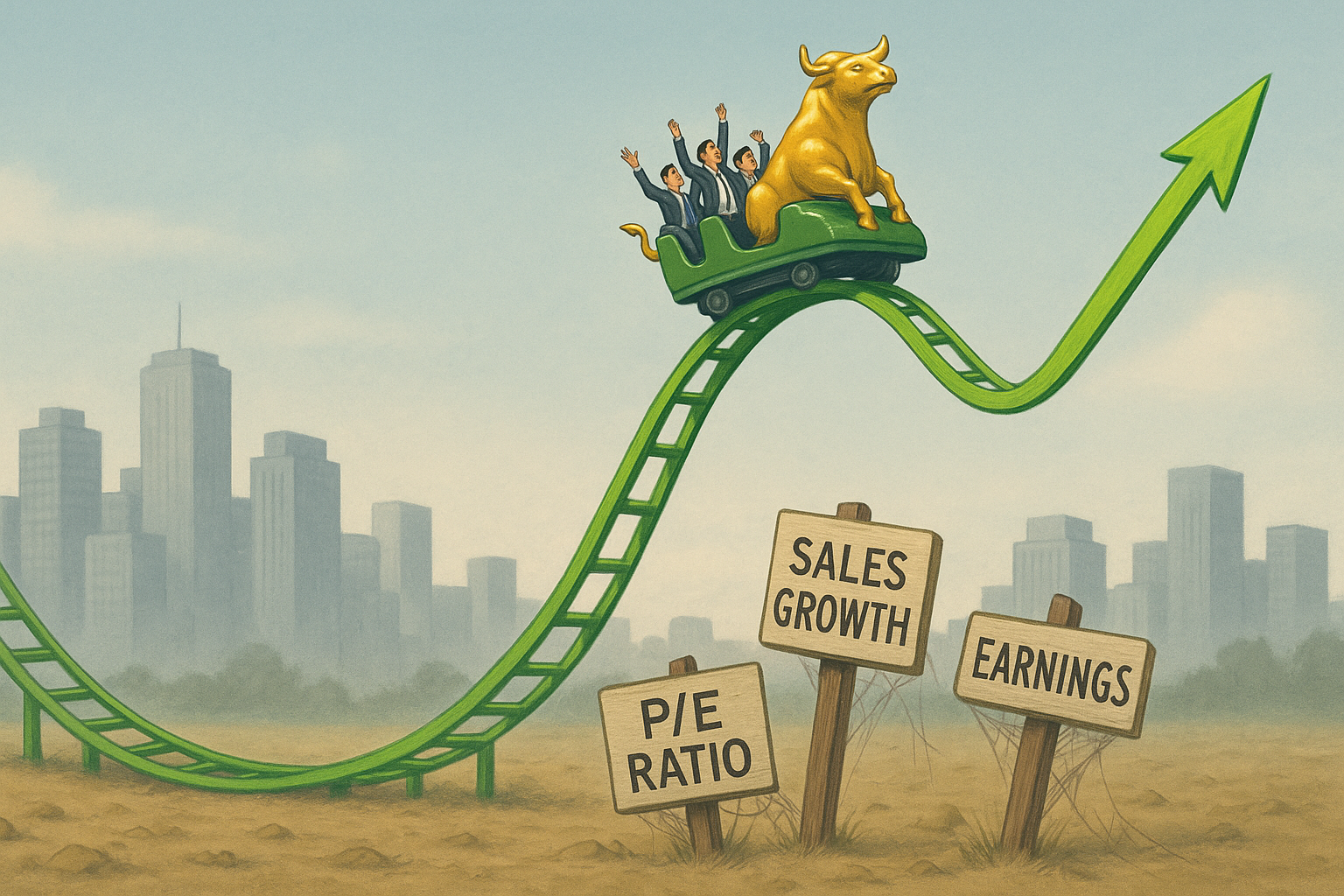Look, it's probably time we admit the emperor is strutting around stark naked. The S&P 500's forward P/E ratio is flirting with dot-com bubble territory, Nvidia—a company I've followed since they were just making graphics cards for gamers—has somehow ballooned to a mind-boggling $4.5 trillion market cap, and Tesla keeps climbing despite sales numbers that are heading in the wrong direction.
A reader emailed me last week with what might be the most honest assessment I've heard lately: "This market is nothing but a Ponzi scheme where fundamentals don't matter." Hard to argue with that gut reaction, isn't it?
The gap between what companies are actually worth and what we're paying for them has become so wide you could drive a semi-truck through it. Even the bulls—the real cheerleaders who've been riding this wave—are starting to shift uncomfortably in their ergonomic office chairs.
We're experiencing what I'd call a fundamentals crisis. Those tried-and-true metrics we financial journalists have been writing about for decades? P/E ratios, sales growth trajectories, margin expansion potential? They've been tossed into the financial dumpster, replaced by... well, what exactly? A collective hallucination where terrible earnings somehow translate to "buy" signals and astronomical valuations are just Tuesday.
Take Nvidia. Brilliant company. Truly revolutionary tech. Their impact on AI can't be overstated. But $4.5 trillion? Really?
(For perspective, that's roughly the size of Germany's entire economy.)
To justify that through any traditional lens would require performance that borders on economic fantasy. They'd need to triple their sales just to reach a P/E ratio that wouldn't make Benjamin Graham roll over in his grave. The current price isn't valuing what Nvidia is—it's pricing in some sci-fi future where Jensen Huang personally invents digital immortality.
And Tesla... oh, Tesla. The poster child for valuation detachment syndrome. Sales going down, stock going up. In what universe does that equation balance? Yet there it goes, defying financial gravity, powered by... the Musk mystique? FOMO? Mass delusion? Pick your poison.
Can this last? My instinct (and 15 years covering market cycles) screams "no," but I've been humbled enough times to know that markets can stay irrational far longer than critics can stay solvent—or employed as market commentators.
What's driving this disconnect? Several factors worth unpacking:
First, passive investing has fundamentally rewired market dynamics. When billions mindlessly flow into index funds and ETFs every month—regardless of whether companies deserve that capital—it creates an artificial demand that just keeps pushing prices higher.
Second, the narratives around transformative technologies like AI have created this "but this time is different!" mentality. And maybe it is! But probably not in the way or to the degree that current valuations suggest.
Third, despite Jerome Powell's best efforts at looking tough, we're still swimming in the aftermath of the most accommodative monetary policy experiment in human history. All that printed money had to go somewhere. Turns out, much of it went to bidding up asset prices.
But here's where I'll push back against the pure "Ponzi scheme" characterization my reader suggested (though I see their point)...
Underneath all this froth, there is genuine value being created. Nvidia's chips really are enabling an AI revolution that could transform the economy. Apple's services business is growing impressively. Microsoft's cloud services are changing how enterprises function.
The problem isn't that these businesses are worthless—it's that their current prices assume they'll execute flawlessly for years while facing zero serious competitive threats. The margin for error has been completely eliminated from the equation.
So should you invest now? The conventional wisdom says "you can't time the market" and "time in the market beats timing the market." But these maxims were developed during periods when valuations generally hovered within historical norms, not when they consistently pushed the envelope of rationality.
A more nuanced approach might be warranted:
- Keep some market exposure (because being completely out can be just as dangerous as being all in)
- Tilt toward value and quality factors
- Increase international diversification (have you seen European valuations lately? Practically a bargain basement)
- Keep some powder dry for potential corrections
- Lengthen your time horizon—if you're investing for decades, today's valuations become somewhat less terrifying
The hardest part of investing isn't understanding the math—it's managing your own psychology. FOMO can be just as financially devastating as panic selling, just on a different timeline.
History points to two potential paths from here: either valuations gradually normalize through a combination of earnings growth and price stagnation (the "soft landing" everyone's hoping for), or we experience a more painful correction that brings expectations crashing back to reality (the scenario no one wants to talk about at dinner parties).
Either way, today's investor faces a genuine dilemma. The market looks objectively expensive by almost any historical measure, but sitting on the sidelines means potentially missing gains and watching inflation eat away at your purchasing power like termites in a wooden foundation.
Perhaps the most rational approach in an irrational market is to acknowledge the contradictions, diversify appropriately, and remember that in the long run, valuation does eventually matter—even if "eventually" takes a lot longer to arrive than we expect.
And maybe that's the ultimate irony of today's market: the most irrational choice might be expecting rationality in the first place.
